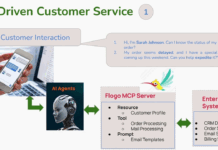
Traditional processes and applications have proven to deliver efficiency, agility, compliance, and transparency. The demand for these benefits will continue along with traditional processes, but they will be delivered in a different way over time. The real difference is that digital processes and applications will also deliver innovation and differentiation in a rapid fashion with speeds unimaginable today, all while evolving in an incremental way. The day of the big blob application dropped in a big bang way is officially over and reaching extinction.
The “day of the digital way” that is tapping into moving real-time patterns and events—Fast Data—to allow for evolutional learning, prediction, and dynamic change at warp speed to take us beyond our normal way of doing business is here. We will be intelligently examining events, data, and patterns that are emerging from our processes, applications, systems, customers, partners, and the Internet of Things for opportunities and threats, and adding human insight where it is needed to intercept business needs.
Digital Innovation:
The way we have delivered processes, applications, and systems in the past required a precise approach that put a premium on getting things right. In the new digital world, solutions will emerge through experimentation and be guided by constraints rather than having to implement a common middle of the road and tightened down set of specifications. The experimentation can happen in an iterative fashion leveraging Fast Data with real-time feedback mechanisms.
Digital Differentiation:
Processes, applications, and systems in the past delivered a “one size fits all” approach at the worst and standard classes of constituents at the best. In the new digital world every context, customer, and partner can be catered to in unimaginable ways. In this world, you can be all things to all people, and you can accomplish this lofty goal while considering different contexts where differences can morph situationally. This kind of power will literally allow organizations to steal customers away from competitors and create the kind of customer intimacy that we can only dream of at this point in time.
Digital Speed:
In the past, we were limited to static and long time periods to introduce new products and features leveraging fixed target dates with batches of packaged features. New products will be introduced in a much faster fashion with feature evolution happening in short bursts. In fact, growing patterns of differentiation could be easily aggregating into new products and services. The speed of adjustment will be even faster depending on the business need, but instead of minutes and hours, we could be talking about seconds and nanoseconds for adjustments, particularly for the Internet of Things or real-time trading.
Incremental Evolution:
By establishing a reasonable starting point for processes, applications, and systems, a digital organization could sneak up on the ultimate solution in a time frame that fits the tempo of change that their organization, customers, and partners can handle. Through multiple incremental changes completed in a piece-by-piece basis, true controlled evolution is now an available option. With smaller chunked processes, applications, and systems tapping into the Fast Data stream, the evolution can be easily taken a step at a time. A goodly number of contextual processes are investigative by nature and they evolve as the case progresses and the case data changes.
Net; Net:
Because of the Fast Data-driven digital world, we can now move into the “do it, try it, and fix it” era of computing. Those who do not get on board will have to make dust quickly or eat dust. I can’t think of a more exciting time to be associated with the leverage of technology for organizations. At last!!
Watch this webinar to learn more about how Fast Data can digitalize your business processes.





